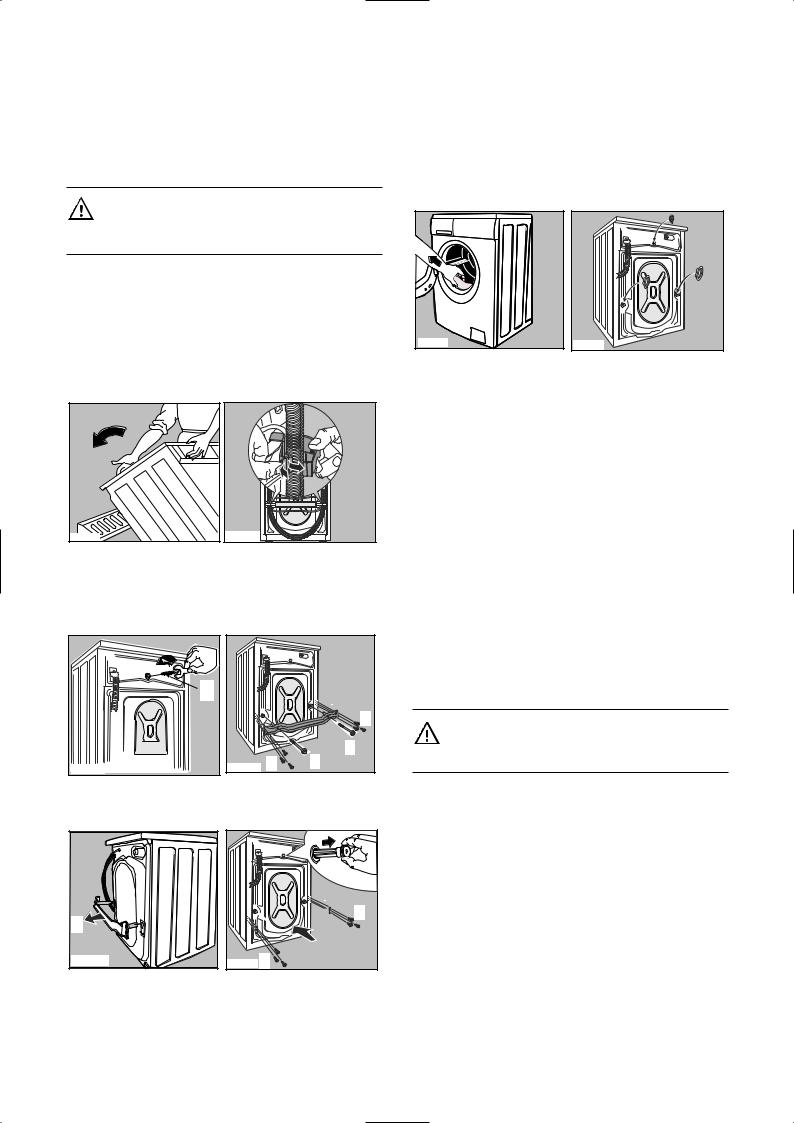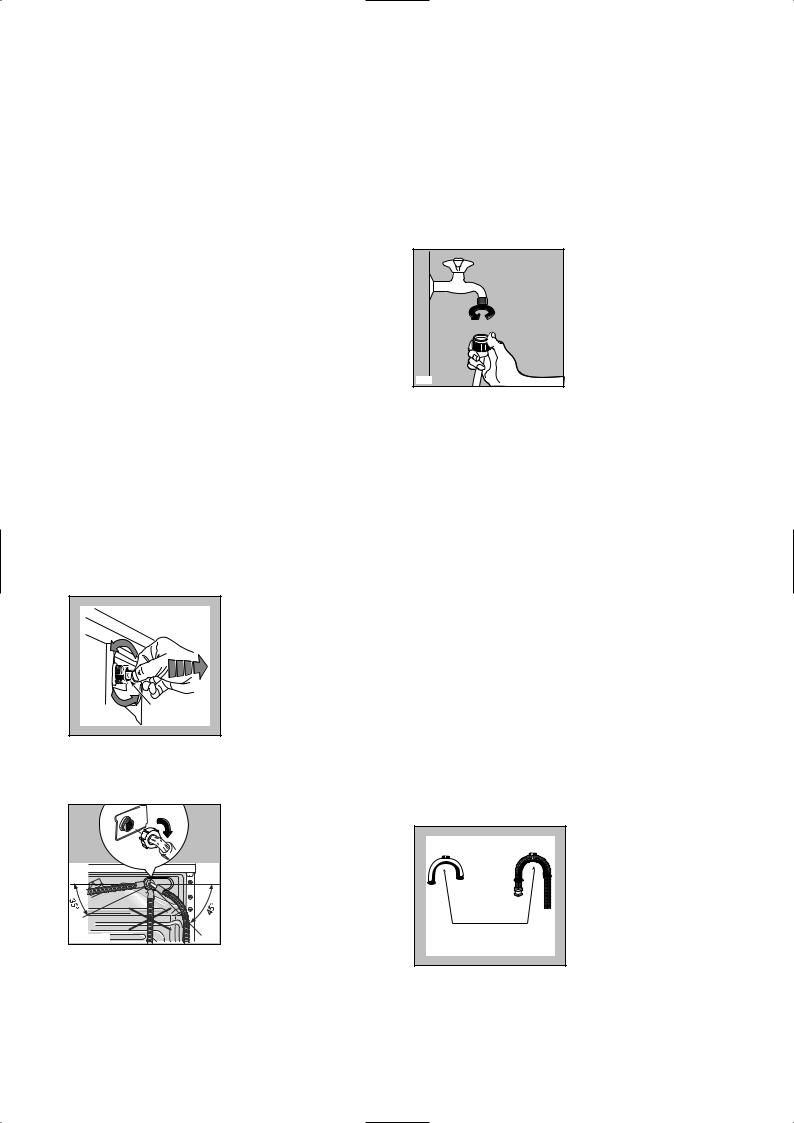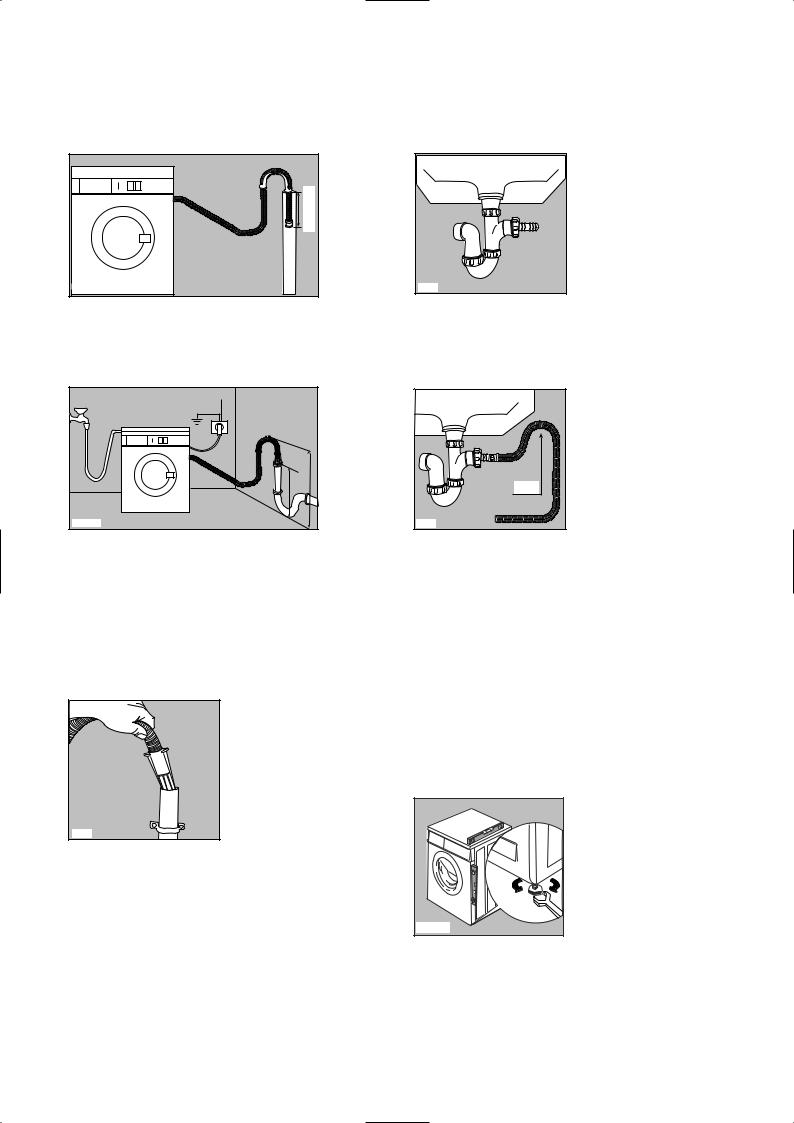John Lewis JLWM 1203 User Manual

JLWM 1203
1200 spin washing machine
Instruction manual
|
|
|
|
|
|
|
|
|
Wash time |
Delay start |
|
30 Minute wash |
Off |
90° |
|
|
|
|
|
||
|
|
|
|
|
|
|
||||
|
Spin |
|
Economy 60° |
1200 |
Stain |
|
|
|
|
|
|
|
Drain |
|
60° |
900 |
|
|
|
|
|
|
|
Rinse |
|
Economy 40° |
700 |
Rinse hold |
|
|
|
|
|
|
Soak |
|
40° |
500 |
|
|
|
|
Door lock |
JLWM1203 |
Wool |
Cold |
|
30° |
None |
|
|
|
|
|
|
30° |
|
60° |
Spin |
Prewash |
Intensive |
Extra rinse |
Quick |
Start/Pause |
|
|
|
Hand wash |
|
Economy 40° |
|
|
|
|
|
|
|
|
Delicates 30° |
|
40° |
|
|
|
|
|
|
|
|
Delicates 40° |
|
30° |
|
|
|
|
|
|
|
|
|
|
|
Child lock |
|
|
|
|
|

 Important safety information
Important safety information
It is most important that this instruction book should be retained with the appliance for future reference. Should the appliance be sold or transferred to another owner, or should you move house and leave the appliance, always ensure that the book is supplied with the appliance in order that the new owner can get to know the functioning of the appliance and the relevant warnings.
These warnings have been provided in the interest of safety. You MUST read them carefully before use or installation by a qualified person.
If you are unsure of the meanings of these warnings contact the John Lewis branch from which you purchased the appliance.
Installation
●This appliance is heavy. Care should be taken when moving it.
●It is dangerous to alter the specifications or attempt to modify this product in any way.
●All packing and transit bolts must be removed before use. Serious damage can occur to the product and to property if this is not adhered to. See relevant section in instructions.
●Care must be taken to ensure that the appliance does not stand on the electrical supply cable.
●If the machine is situated on a carpeted floor, please adjust the feet in order to allow air to circulate freely.
●Always be sure, that there is no water leakage from hoses and their connections after the installation.
Child Safety
●This appliance is designed to be operated by adults. Children should not be allowed to tamper with the controls or play with the product.
●This appliance is not intended for use by person (including children) with reduced physical sensory or mental capabilities or lack of experience and knowledge unless they have been given supervision or instruction concerning use of the appliance by a person responsible for their safety.
●Pets and children have been known to climb into washing machines. Please check your drum before use.
●The glass door becomes very hot during the washing cycle. Keep children away from the vicinity of the appliance whilst it is in operation.
●Keep all packaging well away from children.
●Keep all detergents in a safe place out of children’s reach.
●When the appliance is to be scrapped, cut off the power supply cable and destroy the plug with the
remaining cable. Disable the door catch in order to prevent children from becoming trapped inside while playing .
Use
●Always unplug the appliance and turn off the water supply after use.
●Do not overload the appliance. See relevant section in the instruction book.
●Only wash fabrics which are designed to be machine washed. If in doubt, consult the care label on the clothes.
●Before washing, ensure that all pockets are empty and buttons and zips are fastened. Avoid washing frayed or torn articles and treat stains such as paint, ink, rust, and grass before washing. Underwired bras must NOT be machine washed.
●Any objects such as coins, safety pins, nails, screws, stones or any other hard, sharp material can cause extensive damage and must not be placed into the machine.
●Garments which have been in contact with volatile petroleum products should not be machine washed. If volatile cleaning fluids are used, care should be taken to ensure that the fluid is removed from the garment before placing in the machine.
●Wash small items such as socks, laces, washable belts etc in a washing bag or pillow case as it is possible for such items to slip down between the tub and the inner drum.
●Only use the advised quantities of fabric softener. Damage to the fabric can ensue if you over-fill. Refer to the manufacturer’s recommendations of quantities.
●As some duvets and eiderdowns should be washed in large commercial machines because of their bulk, please check with the manufacturer of the item before washing in a domestic machine.
2

Maintenance and Cleaning
●For information on maintenance and cleaning your washing machine see pages 24 - 25 of this instruction manual.
Service
●This product should only be repaired or serviced by an authorised Service Engineer and only genuine approved spare parts should be used.
 Ecological hints
Ecological hints
To save water and energy and help protect the environment, we recommend that you follow these hints:
●Normally soiled laundry may be washed without prewashing in order to save detergent, water and time (the environment is protected too!).
●The machine works more economically if it is fully loaded.
●With adequate pre-treatment, stains and limited soiling can be removed; the laundry can then be washed at a lower temperature.
●Measure out detergent according to the water hardness, the degree of soiling and the quantity of laundry being washed.
 Environmental Information
Environmental Information
●After unpacking please dispose of packaging with due regard to safety and the environment.
●Materials marked with the symbol  are recyclable.
are recyclable.
●Check with your local Council to see if there are facilities in your area for recycling this appliance.
WARNING:
A cut off plug inserted into a 13 amp socket is a serious safety (shock) hazard. Ensure that the cut off plug is disposed of safely.
The symbol  on the product or on its packaging indicates that this product may not be treated as household waste. Instead it should be taken to the appropriate collection point for the recycling of electrical and electronic equipment. By ensuring this product is disposed of correctly, you will help prevent potential negative consequences for the environment and human health, which could otherwise be caused by inappropriate waste handling of this product.
on the product or on its packaging indicates that this product may not be treated as household waste. Instead it should be taken to the appropriate collection point for the recycling of electrical and electronic equipment. By ensuring this product is disposed of correctly, you will help prevent potential negative consequences for the environment and human health, which could otherwise be caused by inappropriate waste handling of this product.
For more detailed information about recycling of this product, please contact your local council, your household waste disposal service or the shop where you purchased the product.
3

Contents
For the User
Important Safety Information
Installation Child safety
Description of the Appliance
Detergent dispenser drawer Child safety feature
The Control Panel
Programme information
Using the washing machine
Load the laundry
Measure out the detergent Measure out the fabric softener Switch the machine on
Select the desired programme/temperature Select the spin speed or the “None” option Select the desired options
Select the “Delay start” Start the programme
How to change an option or a programme during its cycle
How to interrupt a programme
How to open the door during the cycle of a programme
End of programme
Hints & Tips on Washing
Wash Care Symbols
Washing Programmes
For the Installer
2-3 |
Installation |
6 |
|
2 |
Technical Specifications |
6 |
|
2 |
Unpacking |
7 |
|
5 |
|||
Positioning |
7 |
||
5 |
Installation on a suspended floor |
7 |
|
5 |
Plumbing in |
8 |
|
12-15 |
Water inlet |
8 |
|
16 |
Water drainage |
8-9 |
|
17-19 |
Levelling |
9 |
|
In the interest of the environment |
10 |
||
17 |
|||
Electrical connection |
11 |
||
17 |
|||
Permanent connection |
11 |
||
17 |
|||
|
|
||
17 |
|
|
|
17 |
Maintenance and Cleaning |
24-25 |
|
18 |
Descaling |
24 |
|
18 |
After each wash |
24 |
|
18 |
Maintenance Wash |
24 |
|
18 |
External cleaning |
24 |
|
18 |
Cleaning the dispenser drawer |
24 |
|
Cleaning the drawer recess |
24 |
||
19 |
|||
Cleaning the pump |
24-25 |
||
|
|||
19 |
Cleaning the water inlet filter |
25 |
|
The dangers of freezing |
25 |
||
19 |
|||
Emergency emptying out |
25 |
||
20 |
|||
Something Not Working |
26-27 |
||
21 |
|||
Repairs - After Sales Service |
27 |
||
22-23 |
|||
|
|
Guide to use the Instruction Manual
The following symbols will be found in the text to guide you throughout the instructions:
Safety instructions
Hints and tips
Environmental information
This appliance complies with the following E.E.C. Directives:
-73/23 EEC of 19.2.73 (Low Voltage Directive) and subsequent modifications;
-89/336 EEC of 3.5.89 (Electromagnetic Compatibility Directive) and subsequent modifications.
4

Description of the appliance
1 Detergent dispenser drawer
2 Control panel
3 Door handle
4 Drain pump
5 Adjustable feet
1 |
2 |
|
JLWM1203 |
|
3 |
|
4 |
|
5 |
Detergent dispenser drawer
 Prewash
Prewash
 Main wash
Main wash
Fabric softener
SM001
Child safety feature
This machine incorporates a special child safety feature to prevent small children from being trapped inside the machine.
To activate this device, rotate the button (without pressing it) inside the door clockwise until the groove is horizontal. If necessary use a coin. This prevents the door from being closed.
To disable this device and restore the possibility of closing the door, rotate the button anti-clockwise until the groove is vertical.
P1131 |
5

Installation
It is dangerous to alter the specifications or attempt to modify this product in any way.
Care must be taken to ensure that the appliance does not stand on the electrical supply cable.
Any electrical work required to install this appliance should be carried out by a qualified electrician or competent person.
Any plumbing work required to install this appliance should be carried out by a qualified plumber or competent person.
Technical specifications
DIMENSIONS |
Height |
85 cm |
|
|
Width |
60 cm |
|
|
Depth |
63 cm |
|
|
|
|
|
POWER SUPPLY VOLTAGE |
|
230-240 V/50 Hz |
|
TOTAL POWER ABSORBED |
|
2050 W (10A) |
|
|
|
|
|
WATER PRESSURE |
Minimum |
0.05 |
MPa (0.5 bar) |
|
Maximum |
0.80 |
MPa (8. bar) |
|
|
|
|
MAXIMUM RECOMMENDED LOAD |
Cotton, linen |
6 kg |
|
|
Synthetics |
3 kg |
|
|
Delicate fabrics |
3 kg |
|
|
Wool/Hand wash/30 Minute wash |
2 kg |
|
|
|
|
|
SPIN SPEED |
MaximumZ 16 S |
12 00 rpm |
|
|
|
|
|
CONSUMPTION DATA FOR WASHING |
Energy |
1.02 kWh |
|
6 KG NORMALLY SOILED COTTON |
Water |
49 litres |
|
ITEMS WITH PROGRAMME |
|
|
|
“ COTTONS ECONOMY 60° ”: |
|
|
|
|
|
|
|
6

Unpacking
All transit bolts and packing must be removed before using the appliance.
Keep all packaging away from children.
You are advised to keep all the transit bolts for re-use in case the machine is to be transported again.
After removing all the packaging, with assistance carefully lay machine on it’s back to remove the polystyrene base from the bottom.
Remove the power supply cable and the draining hose from the hose holders on the rear of the appliance.
HEC0008 |
HEC0001 |
With the spanner provided unscrew and remove the central rear bolt A.
Unscrew and remove the two large rear bolts B and the six smaller bolts C.
A |
HEC00022 |
|
|
C |
|
|
B |
HEC0003S |
C |
B |
Remove the bracket D, refit the six smaller bolts C and slide out the relevant plastic spacer E.
D |
HEC0011S |
E |
C |
HEC0023 C |
Open the porthole and remove the polystyrene block fitted with the adhesive tape on the door seal.
Fill the smaller upper hole and the two large ones with the corresponding plastic plug caps supplied in the bag containing the instruction booklet.
HEC0010 |
HEC0005 |
|
Connect the water inlet hose as described under the paragraph “Water inlet”.
Positioning
Install the machine on a flat hard floor.
Make sure that air circulation around the machine is not impeded by carpets, rugs etc. Check that the machine does not touch the wall or other kitchen units.
Never place cardboard, wood or similar materials under the machine to compensate for any unevenness in the floor.
If the floor is carpeted or covered with crumbly or soft material, insert a rigid support base under the feet to prevent noise, vibration or displacement. The base should protrude a few centimetres beyond the edges of the machine.
Warning
The machine should NOT be placed on deep pile carpeting.
Installation on a Suspended Floor
Suspended wooden floors are particularly susceptible to vibration. To help prevent vibration we recommend you place a waterproof wood panel, at least 15 mm thick under the appliance, secured to at least 2 floor boards with screws. If possible install the appliance in one of the corners of the room, where the floor is more stable.
Note
Please ensure that when the appliance is installed it is easily accessible for the engineer in the event of a breakdown.
7

Plumbing In
Your new washing machine has been designed to be permanently plumbed in to your home’s water supply and drainage system. However, if this is not possible, it may be connected to a suitable existing tap with the drain hose discharging into a sink.
The appliance has an inlet hose, with female 3/4” BSP thread connector. If this connection is not compatible with the plumbing of the existing installation, a variety of connectors are available from good hardware stores and plumbers merchants to suit most domestic plumbing. Any alteration to your existing plumbing must be carried out by a competent person, or qualified plumber.
Water inlet
An inlet hose is supplied and can been found inside the machine drum.
Do not use the hose from your previous machine to connect to the water supply.
1.Open the porthole and extract the inlet hose .
2.Connect the hose with the angled connection to the machine.
A |
HEC0024 |
3. Remove the security gasket cup by turning and pulling it away. Pay attention not to move or remove the gasket.
HEC0006QL |
Important!
Do not place the inlet hose downwards. Angle the hose to the left or right depending on the position of your water tap.
4.Set the hose correctly by loosening the ring nut. After positioning the inlet hose, be sure to tighten the ring nut again to prevent leaks.
5.Connect the hose to a tap with a 3/4” thread. Always use the hose supplied with the appliance.
P1088 |
Installation should comply with local water authority and building regulations’ requirements.
The appliance must be connected to a cold water supply.
A minimum water pressure of 0.5 bar is required for safe operation of the appliance.
If you cannot make the cold water connection direct from the rising mains, you may be able to operate the appliance from your cold water storage system.
There should be a minimum vertical distance of 5.02m (16.5 ft) between the appliance’s inlet and the bottom of the water storage tank.
Water drainage
This appliance is designed to be permanently plumbed into your home's drainage system using one of the following methods.
1. Into a drainage standpipe.
Firstly form a hook in the end of the drain hose using the “U” piece” supplied.
“U” piece supplied
P1199
Place the drain hose into your standpipe, which should have an internal diameter of approximately 38mm thus ensuring there is an air break between the drain hose and standpipe.
8

|
38 mm (½”) |
|
|
standpipe |
|
½ |
diameter |
|
30 cm (12") |
||
|
HEC0013
When discharging into a standpipe ensure that the top of the standpipe is no more than 90cm (35.4'') and no less than 60cm (23.6'') above floor level.
3 pin |
|
60 cm (23.6”) |
Max. 90 cm (35.4”) |
Min. |
|
HEC0012 |
|
The drain hose may be extended to a maximum of 4 metres. An additional drain hose and joining piece is available from your local Service Force Centre.
The joining piece must have an internal diameter of 18mm.
If your drain hose looks like this (see below) you do not require the “U” piece”. Just push the hose firmly into the standpipe.
P1212
2. Onto a sink outlet spigot.
If the outlet spigot has not been used before, remove any blanking plug that may be in place.
P1197 |
Push the drain hose onto the spigot and secure with a clip if required, ensure a loop is formed in the drain hose (see diagram) to prevent waste from the sink entering the washing machine.
Loop |
P1198 |
Important |
Before connecting the machine to new pipework or to pipework that has not been used for some time, run off a reasonable amount of water to flush out any debris that may have collected in the pipes.
Levelling
Level the washing machine by raising or lowering the feet. The feet may be tight to adjust as they incorporate a self locking nut, but the machine MUST be level and stable.
If necessary, check the setting with a spirit level.
HEC007S |
Any necessary adjustment can be made with a spanner. Accurate levelling prevents vibration, (see note on positioning), noise and displacement of the machine during operation.
9
